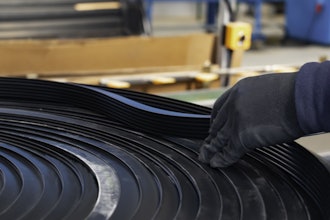With heightened competition from the global economy, a dwindling workforce as a result of the labor shortage and increasing demands from customers—it’s never been more important for manufacturing facilities to focus on efficiency. Of course, many operations managers turn to lean techniques in an effort to streamline and increase production, but how can facilities take things a step further? Hiring and developing a “Water Spider.”
Gaining Efficiency on the Production Floor: Embracing the Water Spider
The Water Spider, which comes from the Japanese term Mizusumashi, is a role that is solely focused on keeping workstations stocked throughout the production line. A Water Spider’s main purpose is to provide the tools and resources necessary to keep production moving—freeing up assembly workers to concentrate only on the immediate task—adding value to the process, with as little variation as possible. When workers on the floor can focus solely on the task at hand, without worrying about equipment or restocking, they are more efficient. Water Spiders reduce non-value add tasks for those on the production line and replenish workstations in real-time, equating to a huge efficiency bonus.
Reducing Waste and Improving Process
The key to improving efficiency in manufacturing is to reduce waste and eliminate non-value add activity. The Water Spider isolates the waste and fixes problems before they become an issue. Walking back and forth to obtain equipment, or to re-stock, is a wasteful task and cuts into productivity. The Water Spider serves as the owner of non-value-add activity, and their sole role is to eliminate it. For example, a common Water Spider task is to bring pieces and materials to every workstation on the floor, ensuring each worker has what they need to complete their part of the job, distraction-free. Often, the Water Spider will use a custom-built workstation equipped with a laptop, scanner and mobile power that enables them to stay connected to ERP and process transactions on the fly while moving around the floor. Traditional manufacturing practices might look at this role as a glorified assistant that fetches materials, but a lean facility demands much more from this position and understands its true value to the overall process.
Attributes of a Water Spider
The importance of this role is well-defined, but how does one excel as a Water Spider? What are the characteristics that a lean operation should be looking for in hiring their waste reduction savant?
- Observant – A good Water Spider fully understands every sub-process that occurs on the manufacturing floor. To succeed, the Water Spider needs to comprehend all aspects of the process, and act on what is important for the value creation of each sub-process. It’s not enough to fill empty slots with various raw materials, the Water Spider must understand the “why” behind their job and fill the slots with purpose. The individual in this role is constantly learning, and the better he or she can understand the production line, the more successful the entire operation will be.
- Dependable – Every person on the production line must put their faith in the Water Spider for material and tool replacement. In addition, the Water Spider also needs to be ready for any out-of-cycle event that occurs. Spills and mistakes happen, and a good Water Spider will swoop in to limit the damage and keep the process moving.
- Prepared – A good Water Spider is always prepared, even for the unexpected. When things drastically change in the process or plan, a great Water Spider will adapt and adjust. Adjustments can come in the form of having the proper tools and equipment ready to make any necessary shift in the production schedule. When the Water Spider is the one making equipment and scheduling changes, the floor operators can focus on the process without interruption.
- Energetic – Water Spiders need to cover a lot of ground, in short order. A well-designed process requires constant movement to ensure the right amount of materials, tools, and supplies are at the right place, at the right time. To aid the Water Spider in their tasks, smart facilities implement mobile workstations—so while on the move, the spider has everything ready to re-stock, clean or lend a helping hand.
In facilities focused on lean and efficiency, Water Spiders play a critical role. They have all the characteristics of a manager and are fine-tuning skills that will carry over to a leadership role within the company. A Water Spider should be someone who has potential to do more, as they will ultimately understand the entire process better than most workers on the production floor.
Production facilities are constantly changing to meet the demands of their customers, one of the best ways to ensure operators are not overwhelmed is by having a sophisticated Water Spider system in place. Constantly improving process is a must, smart production facilities will consider this important role to gain lasting efficiency.
Kevin Ledversis is the Director of Sales at Newcastle Systems.























